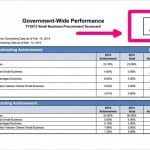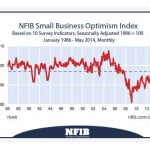
a few observers argue that self-employment is counter-cyclical. that specialize in humans’s choices to enter business for themselves, those researchers argue that some of the folks who lose their jobs whilethe financial system contracts input into self-employment, as opposed to turning into unemployed or exiting the labor force. authorities facts analyzed by means of Robert Fairlie at the university of California at Santa Cruz on behalf of the Kauffman foundation supports this argument, showing that the price at which people transitioned into self-employment rose during the tremendous Recession.
however, as i’ve referred to here earlier than, the focal point of researchers on entry into self-employment in monetary downturns is deceptive. The range of self-employed humans is the manufactured from bothentry into and go out from self-employment. If the fee of exit from self-employment exceeds the charge ofentry, then the wide variety of self-hired people will decline.
all through financial downturns, those in commercial enterprise for themselves have a more difficult timegaining access to capital and face decreased demand for their services and products. As a result,whilst the economic system contracts, the fee at which the self-employed close up save rises. whetherthe variety of self-hired human beings is going up or down at some stage in a recession relies upon onwhether or not the recession has a larger effect on self-employment entry or exit.
to peer if the number of self-hired has a tendency to increase or decrease for the duration of recessions, I looked at facts from the contemporary populace Survey, which tracks the variety of non-agricultural self-employed human beings monthly due to the fact that 1948. using the begin and cease dates of the 11recessions that the national Bureau of financial research says took place in the united states amongJanuary 1948 and may 2014, I in comparison the number of non-agricultural unincorporated self-employedwithin the month earlier than the recessions started out with the range within the very last month of the recessions.
The numbers are surprising. In six of the recessions, the quantity of self-hired declined, even as in five of them, the quantity extended. moreover, in three of the contractions in which self-employment expanded, the wide variety of human beings in private quarter wage employment additionally rose (1960-1961, 1969-1970, and 1980 recessions), suggesting that the downturns had moderate outcomes at the labormarket normal. due to the fact the fantastic impact of monetary downturns is based at the concept thatpeople input into self-employment due to the fact they lose their jobs, it’s far difficult to interpret whatcame about in the ones recessions wherein private quarter wage employment increased.
In three of the recessions wherein private region wage employment declined (1948-1949, 1973-1975, and 1981-1982 recessions), the variety of self-employed rose. In five recessions in which non-public areasalary employment declined (1953-1954, 1957-1958, 1990-1991, 2001, and 2007-2009 recessions), thevariety of self-hired declined.
The recessions wherein self-employment fell have been no longer extra intense than the recessions in which self-employment rose. The median recession of the 11 I looked at was the 1980 recession, whereinthe decline in gross domestic product (GDP) become 2.0 percent from top to trough. In three of the recessions wherein the decline in GDP was extra than the median, self-employment fell, however in two of them self-employment rose. In two of the recessions wherein the decline in GDP changed into less than the median, self-employment declined, and in 3 of them self-employment rose.
It’s interesting to notice that declining self-employment is a hallmark of greater latest recessions. in theultimate three economic downturns (1990-1991, 2000, and 2007-2009 recessions), the quantity of unincorporated self-hired people has fallen. these days, as a minimum, the variety of self-hired does no longer go up when the financial system contracts.




